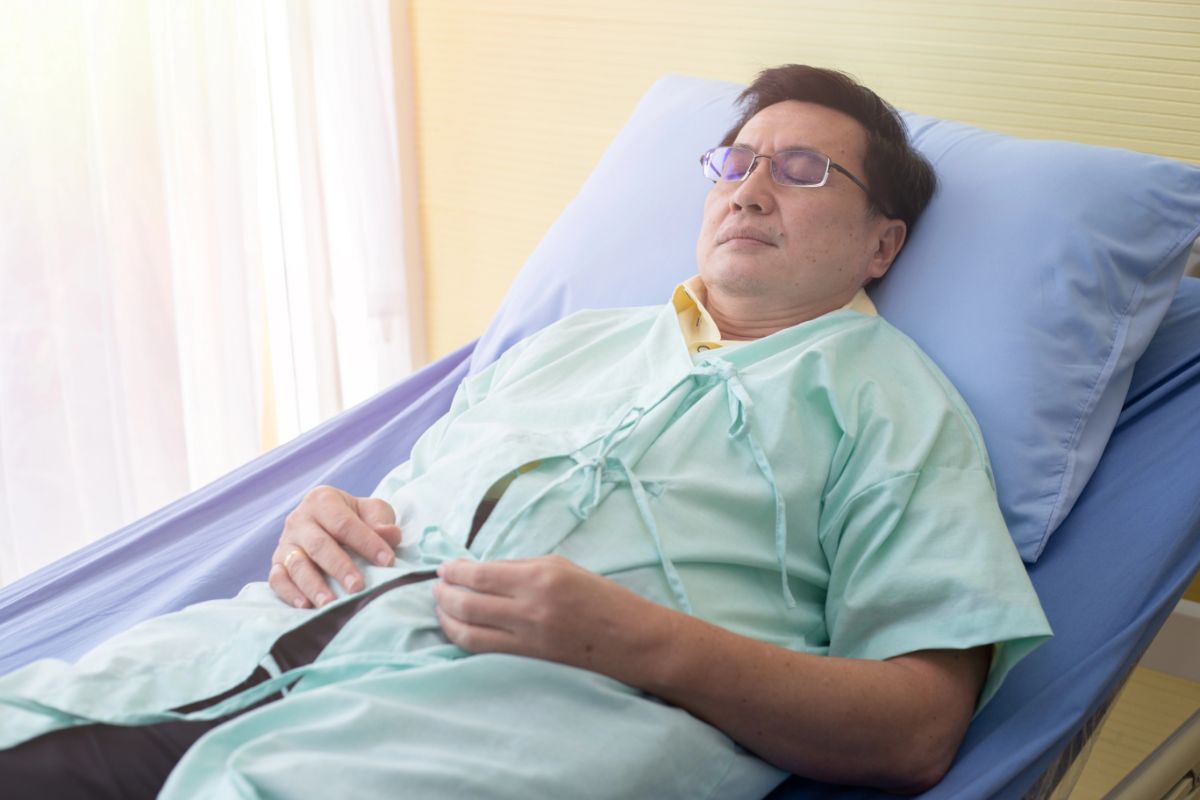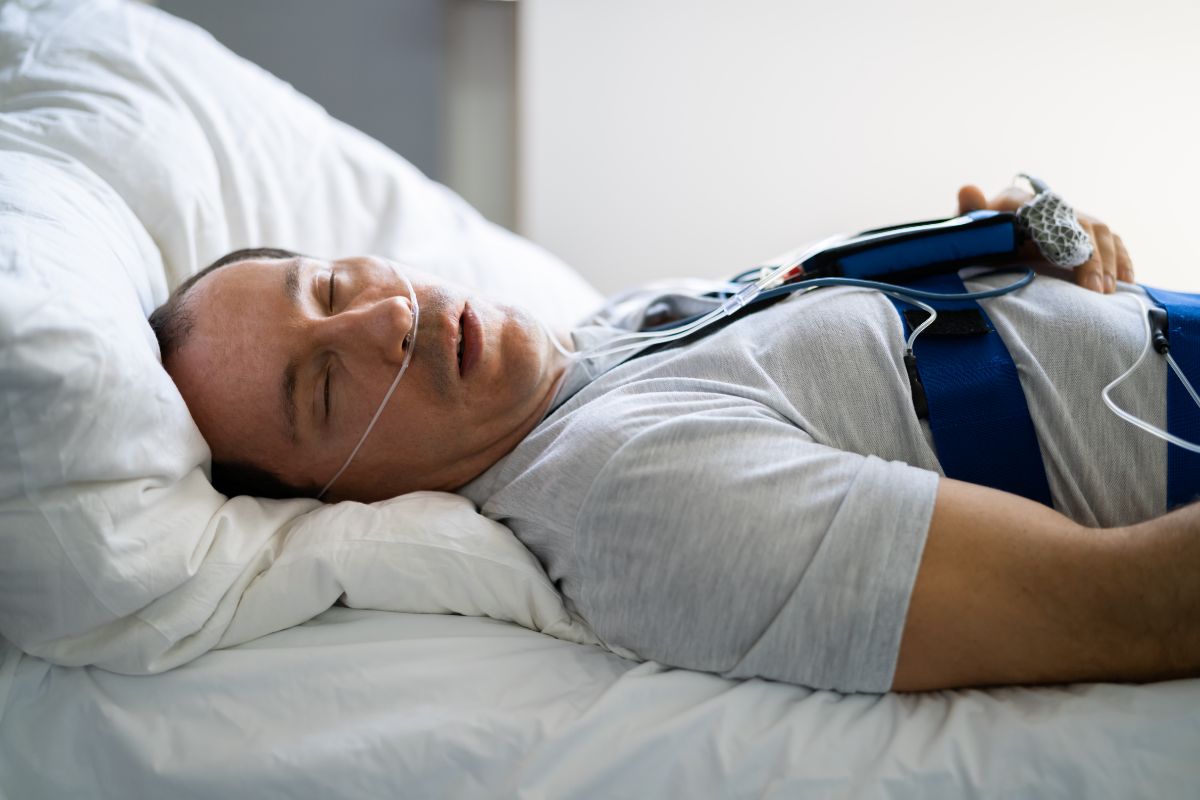Overview
- A sleep test, or polysomnography, is a diagnostic procedure that monitors various body functions during sleep, including brain activity, heart rate, and breathing.
- This study helps diagnose sleep disorders like sleep apnea and insomnia by recording detailed physiological data.
- Post-test, your doctor will review the results, explain any diagnoses, and discuss treatment options or further steps.
A sleep test, also known as polysomnography, is a detailed diagnostic procedure that monitors and evaluates various body functions during sleep. It records brain waves, blood oxygen levels, heart rate, and breathing, and also tracks eye and leg movements.
Conducted in a hospital or sleep center, it is performed at night but can be scheduled during the day for individuals who sleep during daytime hours. This article explores what a sleep test is and what you can expect during the procedure.
When is a Sleep Test Needed?

Polysomnography is used to monitor sleep stages and cycles to identify or rule out sleep-related health issues. Doctors recommend this test for individuals with symptoms that disrupt the duration and quality of their sleep.
The results are vital for diagnosing various conditions, including sleep apnea, restless leg syndrome, insomnia, narcolepsy, and other sleep disorders. By analyzing the data, healthcare providers can accurately determine the nature of the problem and decide on the most effective treatment approach.
Additionally, it helps evaluate the effectiveness of ongoing treatments. If you are already undergoing therapy for a sleep-related condition, this test can assist your doctor in assessing whether the treatment is effective or if adjustments are needed to enhance your sleep quality and overall health.
How Does a Sleep Test Work?

A sleep study uses a variety of sensors to monitor and track different body systems, as multiple factors can affect the quality of your sleep. Key sensors and monitoring methods used in polysomnography include:
- Breathing sensors to detect air movement through your mouth and nose.
- A pulse oximeter to measure your pulse and blood oxygen levels.
- Electroencephalography (EEG) to record your brain’s electrical activity during sleep.
- Electrocardiography (EKG or ECG) to monitor the electrical activity of your heart.
- An electromyogram (EMG) to track muscle movements.
Before the Test
Once it’s determined that you need a sleep study, your healthcare provider will schedule the procedure based on your regular sleep patterns, preferences, and availability. It is conducted during your usual sleeping hours to ensure accurate results.
Preparing for the sleep study involves arranging for an overnight stay at the hospital. Upon arrival, you’ll be advised to take a bath or shower before the test. Avoid using creams, lotions, or hair products afterward to ensure that the sensors adhere properly and provide clear readings.
If you are taking any regular medications, discuss them with your doctor beforehand. They can guide you on how to manage your medications safely during the test and address any concerns. Furthermore, if you have skin allergies, inform your doctor, as some adhesives used with the sensors may cause irritation or allergic reactions.
During the Test
On the day of your sleep study, avoid caffeine and alcohol for at least eight hours before the test, as these substances can disrupt your normal sleep patterns and impact the results. Additionally, try to refrain from napping before the study, as it could make it more difficult to fall asleep during the test.
During the procedure, sensors will be placed on your scalp, temples, chest, and legs to monitor electrical signals from the brain and muscles. These sensors are connected to a computer via long, flexible wires, allowing you to move comfortably in bed.
While you sleep, technicians will track various factors such as heart rate, brain waves, eye movements, breathing patterns, blood oxygen levels, and snoring. For those with sleep apnea, they may recommend using a positive airway pressure (PAP) machine. This device helps keep your airways open during sleep by delivering a steady stream of air through a mask, making it easier to breathe.
After the Test
After your polysomnography, the sensors will be carefully removed, and you can leave the hospital. Your doctor will schedule a follow-up appointment to review the test results with you. During this visit, they will discuss the findings, explain any diagnoses, and outline potential treatment options or further steps based on the results of your sleep study.
Key Takeaway
Answering the question of what is a sleep study involves knowing its processes and all that it involves. Knowing how the procedure works and what it assesses helps you make an informed decision about whether you need a sleep test to address your sleep issues.
Here at Perpetual Help Medical Center – Las Piñas, we understand the crucial role that quality sleep plays in your overall health. Our comprehensive polysomnography tests are tailored to identify and address your sleep issues. We are committed to providing detailed assessments and customized solutions to ensure you receive the most effective care for improving your sleep and enhancing your well-being. Reach out to us to learn more.

